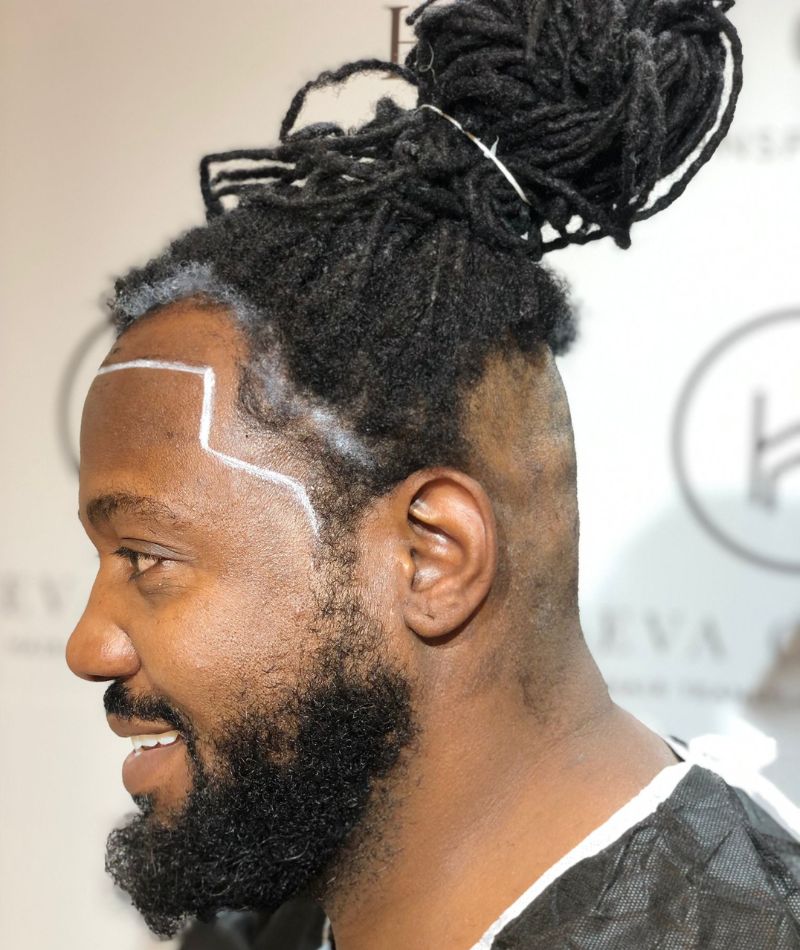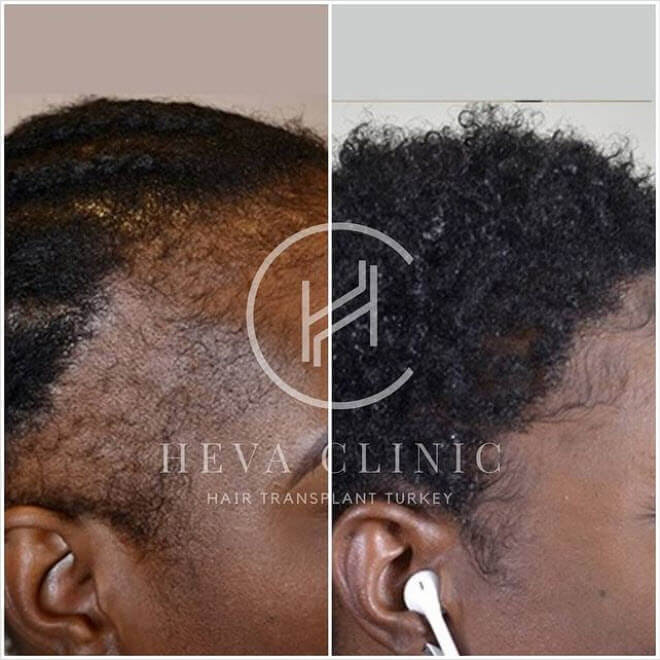
Hair transplant with dreadlocks can be an attractive option for people who suffer from severe hair loss but are unwilling to get rid of their dreadlocks. The reason for your hair loss can be various factors that affect the hair growth cycle such as female or male pattern baldness, hormonal changes, or traction alopecia.
Whatever the reason is, hair transplant operation offers a long-term solution to the problems caused by severe hair loss such as weak-looking thinned hair or bald spots.

Hair Transplant with Dreadlocks

Doctor Invloved Extraction & Incisions

Exceptional Results in Less Than a Year
Do I need to shave my dreadlocks for a hair transplant?
Depending on the condition of your hair and the details of our hair transplant procedure, you can keep your dreadlocks on the front and top of your scalp but you might need to shave a part of an area on your back which can be covered with your dreadlocks.
Unshaven hair transplant is not suitable for everyone; you can discuss with your surgeon about the challenges of having dreadlocks during and after your hair transplant operation and decide whether it is possible for your specific case to keep your dreadlocks unshaven.

Is curly hair suitable for hair transplant?
Curly hair is known for its thickness and a single strand occupies a wider area of the scalp. Because of its unique wider structure, it can be trickier to transplant afro-textured curly hair grafts. Your surgeon will need to be careful not to harm the natural structure of the follicles. Despite the challenges, curly or afro-textured hair is suitable for hair transplant thanks to improved hair transplant techniques.
Which methods are used for hair transplants with dreadlocks?
Today, three different hair transplant methods are available for hair transplants with dreadlocks.
These techniques include follicular unit extraction (FUE), direct hair implementation (DHI) methods, and follicular unit transplantation (FUT).
The FUE technique is much more sophisticated and involves individual transplantation of hair follicles without the need for removing a patch of hair. Your surgeon will extract individual hair grafts from the donor area and transplants them to where you need more hair volume.
Similar to the FUE technique, the DHI technique involves individual extraction of hair grafts. However, this technique uses a special tool called the Choi pen for the transplantation process.
The FUT technique is an older approach to hair transplant where a strip of hair is removed from the donor area and split into smaller hair grafts before the transplantation step. This method leaves a linear scar in the donor area and has a longer recovery period. However, it might be a suitable option for some cases.
How much does a hair transplant with dreadlocks cost?
Hair transplants with dreadlocks require expertise and the utmost attention to detail. This is why not many clinics can offer this operation. A hair transplant with dreadlocks can cost between $2,500 and $6,000 in Turkey.
This price can start from $4,000 and go up to $10,000 in the US.

Can you braid transplanted hair?
Yes, you can braid transplanted hair after a significant amount of time has passed from your operation. It is important to allow the transplanted hair follicles to settle in without any disturbance. Braiding your hair or doing any tight hairstyle can cause stress on the hair follicles and decrease the success of your hair transplant operation.
Make sure that the hair follicles have settled in securely before you can even start to braid your hair loosely.
Can I get dreads after a hair transplant?
After the hair follicles have settled in properly, there should be no issue getting dreadlocks. You can get dreads after a hair transplant once you waited until the end of recovery period that your surgeon recommends.
When can I get a haircut after the operation?
After a hair transplant operation, it is always a good idea to leave your hair undisturbed. This will ensure the best results possible as the hair grafts can settle in properly. Thus, it is advisable to wait for 1-1.5 months before you can get a haircut after the operation.
When will I see the final results?
As great as it would be, it is not possible to see instant results after a hair transplant. You will need to be patient to achieve the results you have been dreaming about as your hair goes through the phases of recovery.
You can see noticeable hair growth 4-6 months after your hair transplant operation. However, you will see the final results and take a hair transplant before & after photo approximately one year after your procedure.
Can I use Rogaine with dreadlocks?
Rogaine (Minoxidil), is an FDA approved hair loss medication that stops or slows down hair loss regardless of your hairstyle. So, the short answer is yes you can use rogaine with dreadlocks.
Also, if you don’t have any extraordinary health condition, it’s recommended to use rogaine after a hair transplant to prevent further hair loss.f







